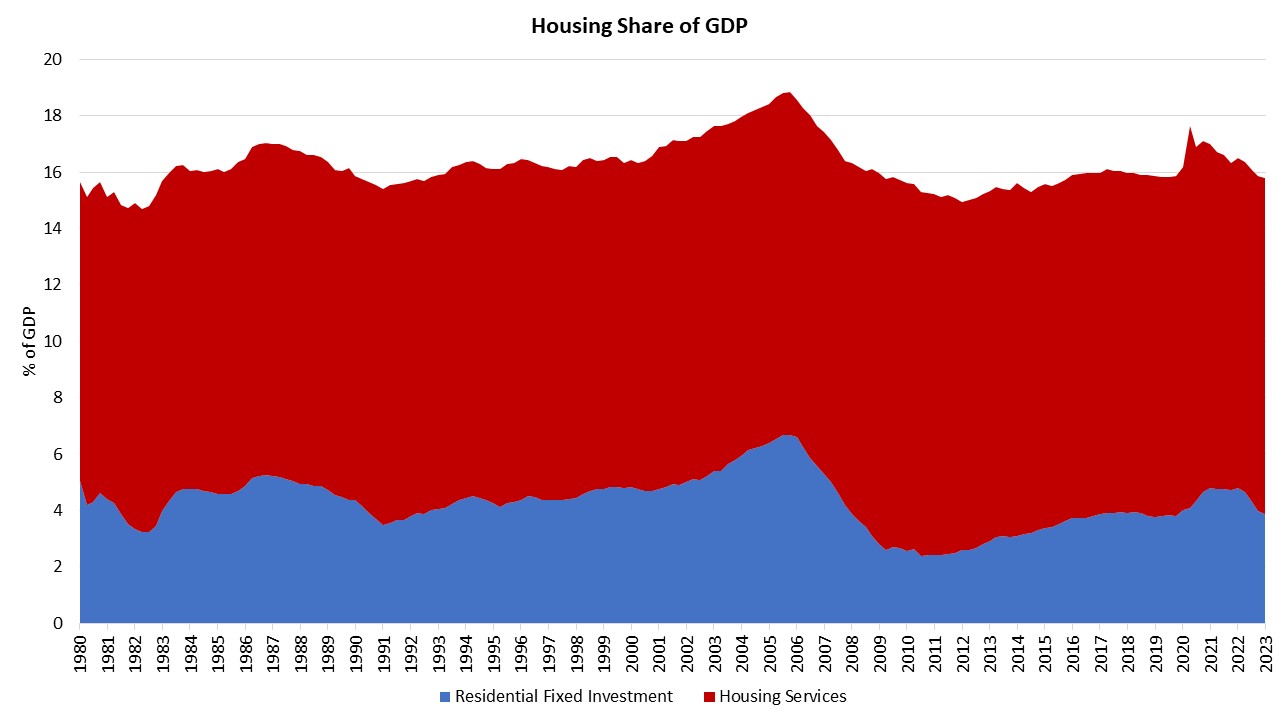Housing’s share of the economy moved lower at the end of the first quarter of 2023. Overall GDP increased at a 1.1% annual rate, following a 2.6% increase in the fourth quarter of 2022 and 3.2% increase in the third quarter of 2022. Despite overall GDP increasing, housing’s share of GDP decreased to 15.8%, below the 2022 fourth quarter share of 15.9%.
In the first quarter, the more cyclical home building and remodeling component – residential fixed investment (RFI) – decreased to 3.9% of GDP. Home construction was lower for most of the first quarter of 2023, despite recent upticks in starts. RFI subtracted 17 basis points from the headline GDP growth rate in the first quarter of 2023.

Housing-related activities contribute to GDP in two basic ways.
The first is through residential fixed investment (RFI). RFI is effectively the measure of the home building, multifamily development, and remodeling contributions to GDP. It includes construction of new single-family and multifamily structures, residential remodeling, production of manufactured homes and brokers’ fees.
For the first quarter, RFI was 3.9% of the economy, recording a $1.0 trillion seasonally adjusted annual pace. RFI decreased for the fourth consecutive quarter, down from $1.188 trillion in the first quarter of 2022 to $1.024 trillion in the first quarter of 2023.
The second impact of housing on GDP is the measure of housing services, which includes gross rents (including utilities) paid by renters, and owners’ imputed rent (an estimate of how much it would cost to rent owner-occupied units) and utility payments. The inclusion of owners’ imputed rent is necessary from a national income accounting approach, because without this measure, increases in homeownership would result in declines for GDP.
For the first quarter, housing services represented 11.9% of the economy or $3.2 trillion on a seasonally adjusted annual basis.
Taken together, housing’s share of GDP was 15.8% for the first quarter.
Historically, RFI has averaged roughly 5% of GDP while housing services have averaged between 12% and 13%, for a combined 17% to 18% of GDP. These shares tend to vary over the business cycle. However, the housing share of GDP lagged during the post-Great Recession period due to underbuilding, particularly for the single-family sector. The recent expansion in housing activity has increased these shares to near historic norms.
Discover more from Eye On Housing
Subscribe to get the latest posts sent to your email.
